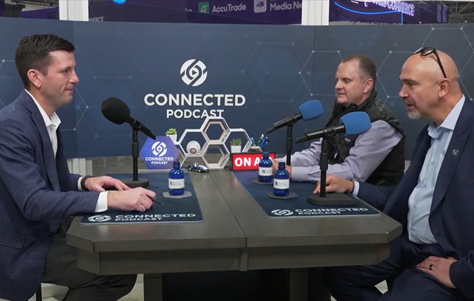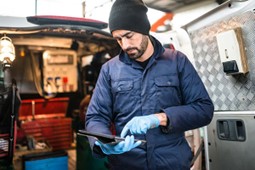3 Tips for Cutting Down Your Service Drive’s “In-Between” Time

Article Highlights:
- Not planning ahead can cause major inefficiencies in your service drive.
- "The back and forth is preventing you from doing what you do best..."
Have you ever stopped to think about why Henry Ford’s moving assembly line was such a huge innovation?
A moving line didn’t remove the need for skilled workers. And at its core, assembling a vehicle on a moving line required just as many steps to be completed as assembly in a standard factory.
The magic of the moving line—and the profit generated by it—happened between the workers, during the huge efficiency gained by cutting down on the time spent between the different functions performed on the assembly line.
Getting really efficient about the “in-between” time—that was what made Ford a billionaire.
And while you’ll never have a moving assembly line in your Service drive, have you ever thought about your own “in-between” time?
Just like Ford, you might be sitting on a wealth of untapped service profit.
Here are three questions to ask yourself:
- Are your techs pre-racking vehicles for the next morning before they clock out for the day?
- Do your techs know their next job before they finish their current one?
- Do your techs plan their work to avoid unnecessary trips to the dispatcher?
If you answered “no” to any of these questions, then you have “in-between” time to cut down on. The tips listed below can serve as reminders that will assist you in your quest to attain greater service profit.
1. Pre-rack Vehicles
Right before a technician’s shift ends, he/she can save time by learning what their first RO will be for the following day.
Technicians can then go ahead and put the car for that RO on the rack for the next morning. Now, technicians can get straight to work upon arrival the next workday.
2. Know Your Next Ticket
Technicians should always be aware of their next RO before completion of their current RO. If not for this simple practice, “in-between” time can really escalate if the technician does not have the proper parts and tools in the service bay ready to go in advance.
3. Avoid Unnecessary Trips to the Dispatcher
Have the keys to the next RO in-hand before parking the vehicle from a just completed RO. If you don’t already have the keys for the next RO in-hand, think of the time spent walking all the way back inside to find out the next RO from the dispatcher, getting the keys, then finally walking all the way back out to the lot to retrieve the vehicle on the next RO.
Your technician’s doctor may approve of all this extra walking, but the back and forth is preventing your team from doing what they do best: servicing vehicles.
Conclusion
Time is a precious resource that must be used wisely. If you work in the service drive you can maximize your time by always thinking two steps ahead.
This may seem like a lot of additional work, reviewing the schedule for next day ROs, finding your next RO in line, and getting the keys ready beforehand. But, with a sophisticated solution, like Technician Dispatching, all of this information is provided to your technicians automatically.
Take after Henry Ford and make more profit for your service drive!
Related Articles:
Earlier this year, I had the privilege of diving into a conversation with Ed Roberts, COO of Bozard Ford, and what struck me was how…
Key drop-off is one of the first impressions a customer has of your service drive. Both you and your customer want it to be as…
We live in an era where a simple tap on your phone can bring almost anything to your doorstep within hours. According to Statista, in…
Here in the North, we face the dreaded winter months. They’re full of stuffy noses, sore throats, and endless coughs. Although sicknesses like the flu…



















